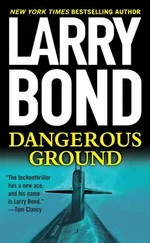“If this doesn’t work—” She lowered her voice. “If the Americans don’t meet us tomorrow tonight, we have to escape on our own. We get a boat — rent, buy, or steal one and just leave. You know what’s waiting for us. We can’t go back!”
Yousef wanted to agree. With freedom a possibility, the thought of returning to Natanz repelled him. But crossing the gulf in a small boat? Two hundred kilometers of open water with a pregnant wife? And there were Pasdaran patrol boats, on the lookout for spies and smugglers. Spies like the two of them, he admitted to himself.
But arrest and Evin Prison held a special terror for every Iranian. Risking death in an open boat might be preferable. “We can talk about that later,” he finally answered. “Let’s see what happens tomorrow tonight.”
“Where will we live?” she asked. Shirin wanted to imagine the future, to think about things she’d kept locked in a corner of her mind for years. She was beginning to consider the possibility that they might actually leave Iran. “Do you want to live in America? We don’t have to, you know. We could live anywhere — France, or Brazil.”
“We’d both have to learn French or Portuguese,” Yousef answered. “At least you speak excellent English. Much better than me.” He shrugged. “I should have studied harder.”
“Then what about England or Australia?”
“It’s pleasant to think about,” he agreed. “We haven’t had a lot of choices for the last few years.”
“The Americans will help us,” Shirin asserted. “They owe us, and even if they didn’t, the flash drive has enough to pay for our passage.”
They drove though the uneven landscape. Highway 65 wove and twisted across crestlines and valleys, always seeking the smoothest way south. Scrubby short plants stood out in different shades of green against dull brown, but it wasn’t all desert. They also passed by fields and orchards that surrounded small farming communities.
Shirin took out the GPS navigator and checked their progress. It showed their planned route. “We should be in Bandar Kangan by three o’clock.”
They would drive south to the coast and then northwest on Highway 96. Their route to Kangan took them right past the place where they would meet the Americans. The spot was nine kilometers southeast of the town, at a place where the highway passed very close to the water. It would be natural for a couple to pause by a narrow, rocky beach and watch the sun go down. Lingering long enough to see the sky erupt into bright colors during twilight — exactly at twilight. The Americans would arrive shortly after that.
Yousef had arranged their trip so they could see it first in the early afternoon, in full daylight. They could also check for any activity. It didn’t have to be VEVAK or a Basij patrol. Fishermen, roadwork, anyone nearby would prevent their escape.
They had a latitude and longitude for the rendezvous point, but they had not entered that into the device. Both had memorized the numbers, and would simply drive, then walk until the readout matched their recollection. Shirin didn’t think she’d ever forget them.
3 April 2013
1100 Local Time/0800 Zulu
USS Michigan, Battle Management Center
The final authorization for the mission had come in late last night, but it came with a twist. Michigan now had to stay in international waters, some fifteen nautical miles from the coast, while the ASDS made the longer trip in. This eliminated more than half of their time reserve, which wasn’t a whole lot to begin with. Now they only had thirty minutes from the moment they arrived on station to the ASDS undocking and heading toward the shore.
Aside from Jerry, now the substitute ASDS pilot, the skipper, Lieutenant Commander Mike Harper, the boat’s engineer, and Lieutenants Simmons and Carlson were the only members of Michigan’s crew present. As navigator, Simmons had to make sure Michigan was in the right place both for departure and rendezvous — especially for the rendezvous. Harper, as the next senior officer, would be the acting XO while Jerry was off the boat. Lieutenant Carlson, cast and all, had been allowed to attend because of his expertise with the ASDS.
Jerry distractedly scratched the three-day growth on his chin. The rest of the SEALs had “gone native” as soon as they’d gotten underway. The Pakistanis were more comfortable working with bearded Americans, and the SEALs all had well-developed facial hair. Jerry had only started his after being tapped as Carlson’s replacement. It seemed pointless to him, but it might make the two Iranians more comfortable when they came aboard the ASDS. He was looking forward to shaving it off the moment they returned to Michigan.
The BMC included enough table and chair space so everyone could sit and see the screen. Lieutenant Ramey, the platoon leader, ran the brief. The other three members of the team, Lapointe, Fazel, and Phillips sat together on one side, with their wheel books open and pencils ready. Jerry and Lieutenant Higgs, the two ASDS pilots, sat across the table. Lieutenant Frederick-son, the ops officer, and Chief Special Warfare Operator Yates, the SEAL platoon chief, watched.
The rest of the SEAL platoon had already had their say during the planning stages. Now, with Michigan less than six hours from the launch point, they prepped the team’s personal gear, and along with Michigan’s crew, checked out and loaded the ASDS.
Although the extraction mission was a straightforward “template” operation, the SEALs had taken the plan apart, doing their best to break it. Worst-case scenarios had included everything from uncharted underwater obstacles to an ambush on the beach to Michigan being forced to abandon the rendezvous.
Lieutenant Ramey, thirty-one, and the platoon’s officer in charge, was on his third deployment. He’d given his platoon instructions to look for every possible contingency and develop a plan to deal with it. “I’ve seen plans go south in a heartbeat. The worst case isn’t watching the wheels come off. It’s having a mission go bad and you don’t even know it. That’s when people die.”
So they’d added problems like surface radar surveillance, or mines on the approach, or the beach itself, as well as obvious ones like the asset being used as bait, knowingly or unknowingly. They’d constructed a dozen different ambush scenarios, using satellite photos of the rendezvous area. How far ashore could the SEALs get before they couldn’t escape? What were the best weapons to break an ambush? Something big and noisy, or small and less noisy? What if one of the SEALs goes down? Or two? What if it’s one of the Iranians? The “what if’s” had gone on endlessly.
Jerry attended many of the planning sessions. Theoretically, his role was simple: Pilot the ASDS to a point two hundred yards from the beach, keep the minisub on station while the SEALs made the pickup, recover the swimmers with the “precious cargo,” and then head back to Michigan.
But Jerry had to know what to do if the SEALs had to move while they were on the beach. What if the team was ambushed? What if the Iranians were at the wrong location? Should the ASDS break down and couldn’t recover the SEALs, where would they go? Each rally point and alternative rendezvous location was marked and noted. Each one had its own code word and specific instructions. Jerry’s actions not only had to be automatic, but intimately understood by everyone, so they all could react instantly to a changing situation. Even if the group was separated, they could work seamlessly with minimal communications.
As the team lead, Ramey kicked off the briefing on the platoon leader’s order by going over the situation, mission objective, and a general overview of the action to be conducted and the means of execution. He then went into the current and projected weather, including tides and moon rising, setting, and phase. Next, a detailed map came up on the large display that illustrated the beach landing site, the initial rallying points, and the individual SEAL positions along with fields of observation and fire. Ramey pointed out the lack of any significant obstacles: the beach was essentially clear with a slight grade to a small berm thirty meters from the waterline, as well as the few areas with appreciable cover.
Читать дальше












